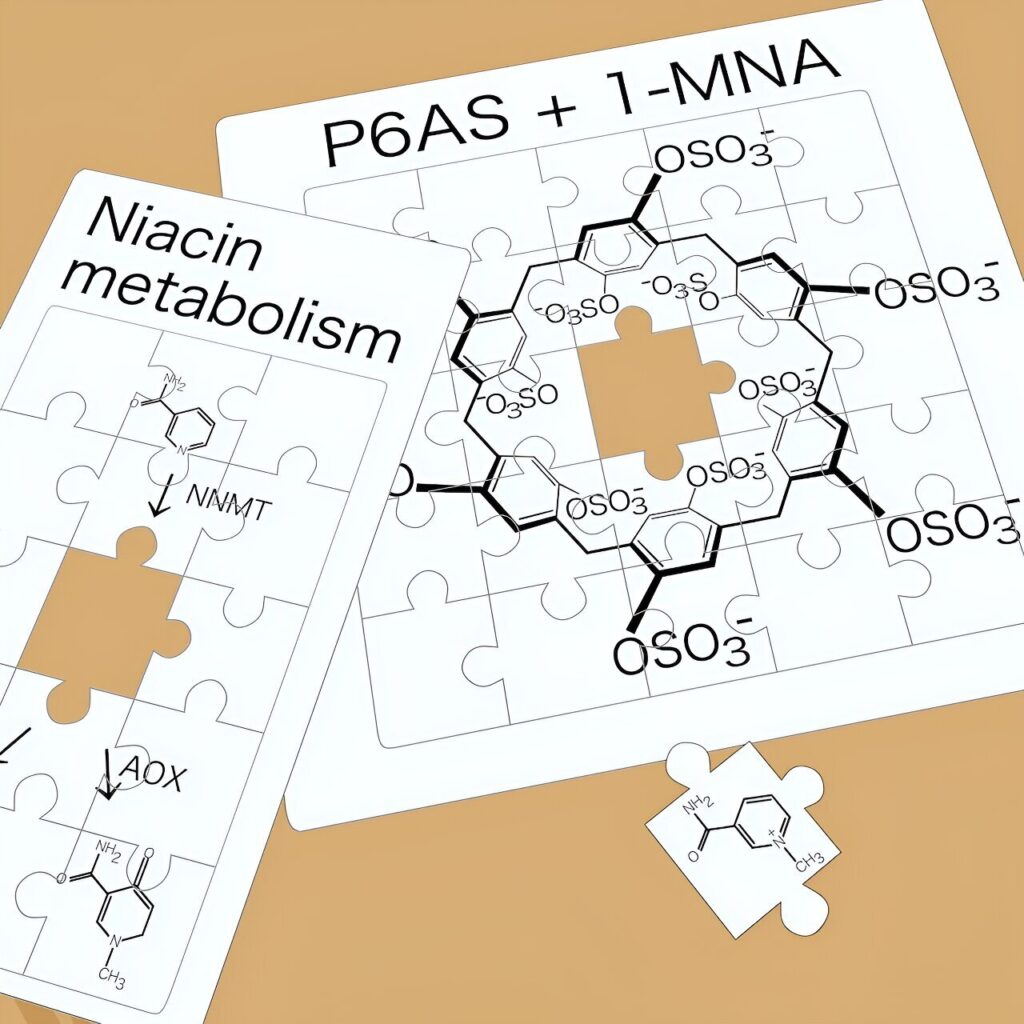Researchers at the Nano Life Science Institute (WPI-NanoLSI), Kanazawa University, have developed a biosensor that improves sensitivity to 1-methylnicotinamide (1-MNA) in urine by orders of magnitude without the need for sample purification. The work is published in the journal Analytical Chemistry.
Metabolites are a common indicator of disease. In particular, 1-MNA levels are increased by cancer, liver disease, obesity and metabolic disease. At present, mass spectrometry and nuclear magnetic resonance measurements are commonly used to measure quantities of metabolites in samples but they are expensive and complicated, limiting their widespread use.
Instead, Masaya Ueno, Tomoki Ogoshi and Atsushi Hirao at Kanazawa WPI-NanoLSI use a type of pillararene molecule as a biosensor, getting around the need for high purification of other 1-MNA biosensing molecules while improving sensitivity and specificity.
1-MNA is produced in the body through the methylation of nicotinamide (Nam) by nicotinamide N-methyltransferase (NNMT) during the metabolism of the vitamin B3 vitamer niacin.
As such, it provides a measure of NNMT activity, which is elevated in some cancers. There is evidence that 1-MNA levels correlate with how aggressive the tumor is and suppressing the gene for NNMT diminishes certain behavioral symptoms of disease.
The researchers explain in their report that “monitoring the NNMT expression and activity in patients by quantification of 1-MNA is important for elucidating and diagnosing their pathology.”
![Chemical structure of Pillar[n]arene and 1-methylnicotinamide (1-MNA). Credit: 2024 Masaya Ueno High sensitivity high throughput biosensor measures metabolite levels that indicate disease](https://scx1.b-cdn.net/csz/news/800a/2024/high-sensitivity-high.jpg)
Previously they had demonstrated some potential for the molecule pillar[6]arene functionalized with 12 carboxylate anions (P6AC) as a 1-MNA sensor, since it binds to 1-MNA and inhibits fluorescence due to photo-induced electron transfer.
However, extensive sample purification was needed and even then, although the millimolar concentrations in murine urine could be detected, the P6AC biosensor lacked the sensitivity to detect the micromolar concentrations found in culture supernatants of human cancer cells.
To find a biosensor with better sensitivity, the researchers investigated the binding between 1-MNA and pillar[6]arene functionalized with sulfonate groups (P6AS).
They found that the binding affinity was 700 times greater than for P6AC, leading to a biosensor with sub-micromolar sensitivity, even in unpurified human urine, although detection of the higher concentrations in mouse murine was better. However, the researchers noted that detection in human serum was not possible due to the higher levels of autofluorescence.
By comparison, the detection sensitivity possible with mass spectrometry is nanomolar but the throughput is much lower. The researchers suggest that the high throughput of the P6AS biosensor could make it suitable for screening thousands of potential NNMT inhibitors, which may help towards a treatment for diseases like liver disease and cancer.
The researchers explain the higher sensitivity thanks to the stronger acidity of sulfonate groups compared to carboxylate groups. They conclude, “Further improvement of our strategy will contribute to high-throughput screening of NNMT inhibitors, diagnosis of liver diseases, and imaging of human cancer cells in vivo.”
Provided by
Nano Life Science Institute (NanoLSI), Kanazawa University


